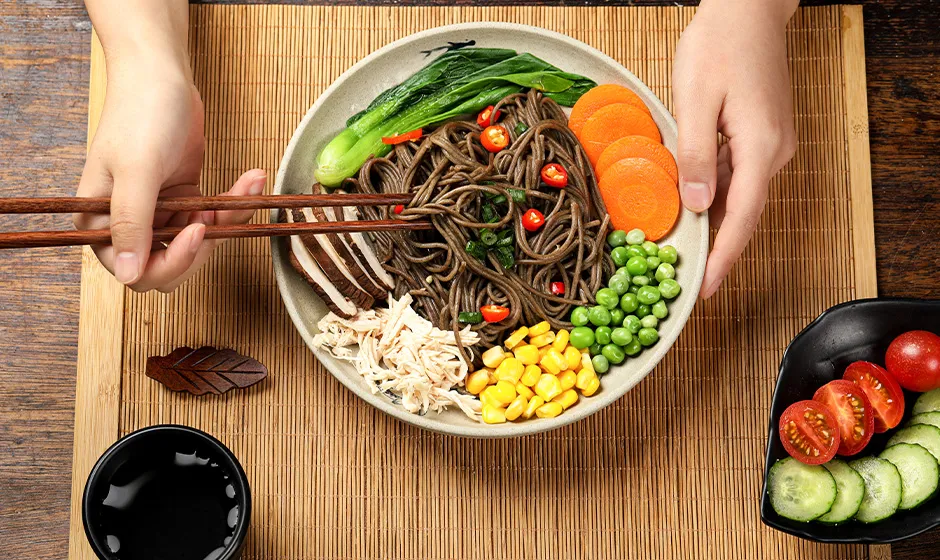buckwheat pasta
The Benefits and Versatility of Buckwheat Pasta
Buckwheat pasta, a unique and nutritious alternative to traditional wheat pasta, has gained popularity among health-conscious individuals and food enthusiasts alike. Despite its name, buckwheat is not a type of wheat but rather a seed from the buckwheat plant, making it gluten-free and suitable for those with celiac disease or gluten sensitivities. With its numerous health benefits and culinary versatility, buckwheat pasta has earned a rightful place in modern diets.
Nutritional Advantages
Buckwheat pasta is packed with essential nutrients. It is rich in protein, with higher levels than traditional pasta, making it an excellent choice for vegetarians and vegans seeking plant-based protein sources. Additionally, buckwheat is high in dietary fiber, which promotes healthy digestion and helps maintain a balanced gut microbiome. The fiber content can also aid in weight management by promoting a sense of fullness, thus reducing overall calorie intake.
Moreover, buckwheat is a significant source of antioxidants, particularly rutin, which is known for its anti-inflammatory properties. This antioxidant-rich profile can help combat oxidative stress and reduce the risk of chronic diseases such as heart disease and diabetes. Buckwheat pasta is also rich in essential minerals like magnesium, manganese, and phosphorus, which play vital roles in various bodily functions, including bone health and energy metabolism.
Culinary Versatility
One of the most appealing aspects of buckwheat pasta is its versatility in the kitchen. It can be used in a variety of dishes, ranging from Italian classics to Asian-inspired recipes. Buckwheat pasta is typically darker in color and has a nuttier flavor compared to traditional pasta, which can add a unique twist to meals.
buckwheat pasta

In Italian cuisine, buckwheat pasta makes an excellent base for sauces. It pairs well with hearty marinara, pesto, or creamy Alfredo, providing a nutritious alternative without sacrificing flavor. For those looking for a gluten-free option, a simple buckwheat spaghetti with olive oil, garlic, and vegetables can create a delicious and healthy meal.
On the other hand, buckwheat pasta is also prominent in Asian cuisine, particularly in dishes like soba noodles, which are popular in Japan. Soba can be served either hot or cold, making it perfect for salads, stir-fries, or soups. The versatility of buckwheat pasta allows it to be integrated into various culinary traditions, catering to diverse taste preferences.
Cooking Tips
When cooking buckwheat pasta, it is essential to pay attention to the cooking time, as it can be quicker to prepare than traditional pasta. Generally, boiling for 4 to 6 minutes is sufficient; however, it's crucial to check the texture and ensure it remains al dente. To enhance the flavor, consider adding salt or a splash of olive oil to the boiling water.
Another great cooking tip is to toss the cooked pasta with olive oil immediately after draining to prevent it from sticking together. This can be especially helpful when preparing cold dishes. Additionally, pair your buckwheat pasta with seasonal vegetables, herbs, and protein sources like beans, tofu, or grilled chicken to create balanced and satisfying meals.
Conclusion
Incorporating buckwheat pasta into your diet represents a delicious and healthy alternative to conventional pasta. Its nutritional benefits, combined with its culinary flexibility, make it an excellent choice for those seeking to enhance their eating habits. Whether you’re looking for a gluten-free option, a source of plant-based protein, or simply want to experiment with new flavors, buckwheat pasta is a delightful addition to any kitchen. Embrace this nutritious pasta alternative and enjoy the unique taste and health benefits it has to offer!
-
Unleash Your Inner Chef with Delectable Italian Pasta CreationsNewsAug.01,2025
-
Savor Health and Flavor: Irresistible Soba Noodles for Sale Await!NewsAug.01,2025
-
Nourish Your Body with Premium Organic Ramen - A Culinary Delight AwaitsNewsAug.01,2025
-
Elevate Your Dishes with Our Exquisite Kinds of Egg NoodlesNewsAug.01,2025
-
Dive into Flavorful Convenience with Our Ramen OfferingsNewsAug.01,2025
-
Discover Exquisite Types of Naengmyeon and Chilled Soba NoodlesNewsAug.01,2025
-
Is Whole Wheat Pasta Healthy?NewsMay.30,2025
Browse qua the following product new the we

















































































































